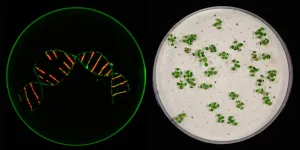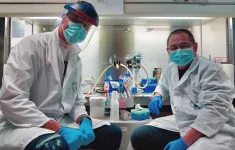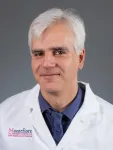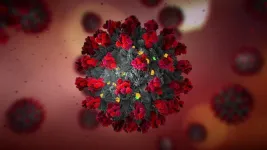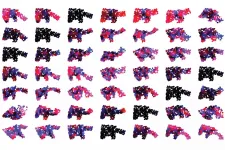INFORMATION:
Research grants
This research was supported by the Grant-in-Aid for Early-Career Scientists from the Japan Society for the Promotion of Science (No. 18K17091).
Press information
Press; Scientific Reports
Title; Direct reprogramming of epithelial cell rests of malassez into mesenchymal-like cells by epigenetic agents
Authors; Koki Yoshida, Osamu Uehara, Yoshihito Kurashige, Durga Paudel, Aya Onishi, Puja Neopane, Daichi Hiraki, Tetsuro Morikawa, Fumiya Harada, Rie Takai, Jun Sato, Masato Saitoh, Yoshihiro Abiko*. (*; Corresponding author)
Online publication date and Embargo; 20th January 2021 at 10 am (UK time).
DOI; 10.1038/s41598-020-79426-4
Contact
About research
Yoshihiro Abiko, BA, DDS., Ph.D., Division of Oral Medicine and Pathology, Department of Human Biology and Pathophysiology, School of Dentistry, Health Sciences University of Hokkaido, 1757 Kanazawa, Ishikari-Tobetsu, Hokkaido, 061-0293, Japan
Tel. +81-133-23-1390 ; Fax. +81-133-23-1390 : e-mail: yoshi-ab@hoku-iryo-u.ac.jp
Public relations
International Education and Exchange Center, Health Sciences University of Hokkaido, 1757 Kanazawa, Ishikari-Tobetsu, Hokkaido, 061-0293, Japan
Tel. +81-133-23-1211 : e-mail: globalnetworkingoffice@hoku-iryo-u.ac.jp
Direct reprogramming of oral epithelial cells into mesenchymal-like cells
2021-03-22
(Press-News.org) Point
Epithelial cell rests of Malassez derived from the periodontal ligament were transformed into progenitor stem-like cells by stimulation with epigenetic agents.
Subsequently, the progenitor stem-like cells were directly differentiated into endothelial, mesenchymal stem, and osteogenic cells that constitute the periodontal ligament.
Background
Stem cells derived from the dental pulp or periodontal ligament have been used for regenerative dentistry. Although it is relatively easy to collect the dental pulp stem cells, it is difficult to obtain adequate numbers of good quality cells; a stable supply is required for their application in regenerative dentistry. In the present study, we generated the progenitor-stem-like cells from ERM cells in the periodontal ligament using the epigenetic modifications without gene transfer. The progenitor stem-like cells were differentiated into endothelial, mesenchymal stem, and osteogenic cells--which constitute the periodontal ligament--using a direct reprogramming method that induces the differentiation of progenitor stem cells into the target cells.
Methods and Results
The isolated ERM cells were induced to differentiate into progenitor stem-like cells, which were similar to stem cells, following stimulation with the epigenetic agents, 5-Azacytidine and Valproic acid, for 1 week. The progenitor stem-like cells expressed the protein stem cell markers NANOG and OCT3/4, which were also observed in the iPS cells (Figure 1).
The progenitor stem-like cells were differentiated into endothelial, mesenchymal stem, and osteogenic cells. The expression of the specific marker for each cell type was confirmed (Figures 2 and 3).
Future prospects
The findings of the present study may contribute to the development of new periodontal regenerative therapy. Epigenetic agents have been successfully applied in various human diseases, including cancers. Nonetheless, further investigations are needed to confirm the findings of this study.
ELSE PRESS RELEASES FROM THIS DATE:
Upgrade for CRISPR/Cas: Researchers knock out multiple genes in plants at once
2021-03-22
Using an improved version of the gene editing tool CRISPR/Cas9, researchers knocked out up to twelve genes in plants in a single blow. Until now, this had only been possible for single or small groups of genes. The approach was developed by researchers at Martin Luther University Halle-Wittenberg (MLU) and the Leibniz Institute of Plant Biochemistry (IPB). The method makes it easier to investigate the interaction of various genes. The study appeared in The Plant Journal.
The inheritance of traits in plants is rarely as simple and straightforward as Gregor Mendel described. The monk, whose experiments in the 19th century on trait inheritance in peas laid the foundation of genetics, in fact got lucky. "In the traits that ...
The bacteria that look after us and their protective weapons
2021-03-22
Patricia Bernal, a Ramón y Cajal researcher at the Department of Microbiology of the University of Seville's Faculty of Biology, is working with the bacterium Pseudomonas putida, a biological control agent found in the soil and in plant roots and which, as such, has the ability to protect plants from pathogen attacks (organisms that cause diseases) also known as phytopathogens. Specifically, the US researcher is studying a molecular weapon that bacteria use (Type VI Secretion System or T6SS) to eliminate their competitors.
The T6SS could be compared to a harpoon with a poisonous tip that bacteria throw at their enemies to annihilate them. In a recent paper, which has just been published in the scientific journal PNAS and for ...
Toronto researchers develop rapid low cost method to measure COVID-19 immunity
2021-03-22
Igor Stagljar made his career building molecular tools to combat cancer. But when the pandemic hit last March, he aimed his expertise at a new adversary, SARS-CoV-2.
Stagljar is a professor of biochemistry and molecular genetics in the Donnelly Centre for Cellular and Biomolecular Research at U of T's Temerty Faculty of Medicine. Last spring, with support from U of T's Toronto COVID-19 Action Fund, his team began developing a new method for measuring immunity to coronavirus in those who recovered from COVID-19.
They are now ready to reveal their creation -- a pinprick test that accurately measures ...
Research in metaphors enables better understanding of depression and patients' needs
2021-03-22
"You have to win the battle against depression", "what counts is not surrendering" and "this is not a short road" are examples of conceptual metaphors typically used to describe experiences and issues associated with disorders like depression. Such expressions allude to abstract concepts but do so using familiar terms that enable better understanding of the experience. This kind of metaphor is often used unconsciously, going unnoticed by both speaker and listener. However, the study of metaphors can help access and understand the thinking, beliefs and feelings of individuals with mental disorders.
The conceptual metaphors of depression found in 23 blogs written by people with major depressive disorders were analysed by a multidisciplinary UOC team composed of Marta Coll-Florit and Salvador ...
Different diseases - common metabolic pathways
2021-03-22
The results argue for a comprehensive approach to disease prevention. The scientists have now published their findings in the journal Nature Medicine.
Many elderly people suffer simultaneously from several, frequently very different diseases, a condition also known as multimorbidity. Their quality of life is severely restricted, and they receive medication from different doctors, a process which is difficult and often insufficiently coordinated. Observations indicate that certain diseases commonly occur together, but the causes of this are largely ...
Women missing out on workplace mentoring post #MeToo
2021-03-22
It's well known that mentoring opportunities are critical for development and career advancement, and are associated with greater job satisfaction and increased earnings and promotions.
Yet a recent study co-authored by RMIT University's Professor Andrew R. Timming found women may be missing out on these opportunities due to fears by male managers of potential misconduct allegations.
"Workplace relations between males and females have changed over the past two years. Male managers are significantly less likely than female managers to mentor or interact one-on-one with female employees," Timming said.
"We found that male managers were less likely to work one-on-one in an office with the door closed and less likely to have ...
Dog vs. machine: Who's a better bomb detector? (video)
2021-03-22
WASHINGTON, March 22, 2021 -- What's better at finding a hidden bomb -- a dog or an electronic chemical detector? In this episode, the Reactions team travels to the U.S. Naval Research Laboratory to find out: https://youtu.be/TRwqOFHOjac.
INFORMATION:
Reactions is a video series produced by the American Chemical Society and PBS Digital Studios. Subscribe to Reactions at http://bit.ly/ACSReactions and follow us on Twitter @ACSReactions.
The American Chemical Society (ACS) is a nonprofit organization chartered by the U.S. Congress. ACS' mission is to advance the broader ...
Majority of cancer patients with COVID-19 have similar immune response to people without cancer
2021-03-22
March 22, 2021 (BRONX, NY)-- Most people with cancer who are infected by the novel coronavirus produce antibodies at a rate comparable to the rest of the population--but their ability to do so depends on their type of cancer and the treatments they've received, according to a new study by researchers at Montefiore Health System and Albert Einstein College of Medicine. The findings, published online today in Nature Cancer, may lead to better care for cancer patients, who face a heightened risk of dying from COVID-19, and suggests that cancer patients should ...
Hormone drugs may disarm COVID-19 spike protein and stop disease progression
2021-03-22
PHILADELPHIA--Hormone drugs that reduce androgen levels may help disarm the coronavirus spike protein used to infect cells and stop the progression of severe COVID-19 disease, suggests a new preclinical study from researchers in the Abramson Cancer Center at the University of Pennsylvania and published online in Cell Press's iScience.
Researchers show how two receptors--known as ACE2 and TMPRSS2--are regulated by the androgen hormone and used by SARS-CoV-2 to gain entry into host cells. Blocking the receptors with the clinically proven inhibitor Camostat and other anti-androgen therapies prevented viral entry and replication, they also showed in lab studies.
The findings provide more insight into the molecular mechanisms of the virus but also support ...
Researchers' algorithm designs soft robots that sense
2021-03-22
There are some tasks that traditional robots -- the rigid and metallic kind -- simply aren't cut out for. Soft-bodied robots, on the other hand, may be able to interact with people more safely or slip into tight spaces with ease. But for robots to reliably complete their programmed duties, they need to know the whereabouts of all their body parts. That's a tall task for a soft robot that can deform in a virtually infinite number of ways.
MIT researchers have developed an algorithm to help engineers design soft robots that collect more useful information about their surroundings. The deep-learning algorithm suggests an optimized placement of sensors within the robot's body, allowing it to better interact with ...

